Before you start
If you haven't already done so, do the following before setting up Apple Mail for use with your Stanford Google Mail account.
- Create a Google account password.
- Enable IMAP in your Stanford Gmail account and save your changes.
Starting the configuration wizard
If you have not previously configured an account in Mail the configuration wizard launches automatically the first time you open Mail.
Otherwise you'll need to start the wizard by doing to following:
- On the Mail menu, click Preferences.
- On the toolbar, click Accounts.
- At the bottom of the window click on the plus sign.
Using the configuration wizard
- Enter the following information into the Welcome to Mail window:
- Full Name: the name you want displayed on your outgoing mail
- Email Address: your @stanford email address
- Password: leave blank
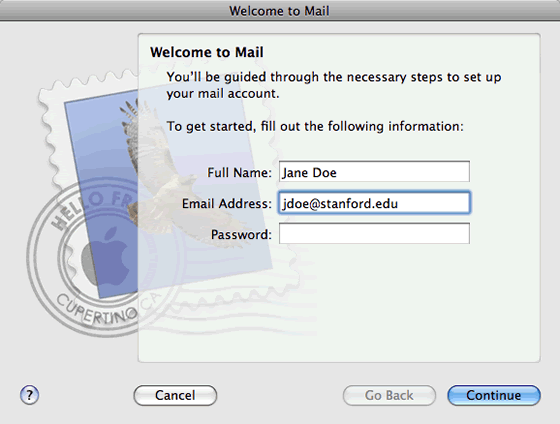
- A message saying that the Exchange server autodiscover function failed may be displayed. Click Continue.
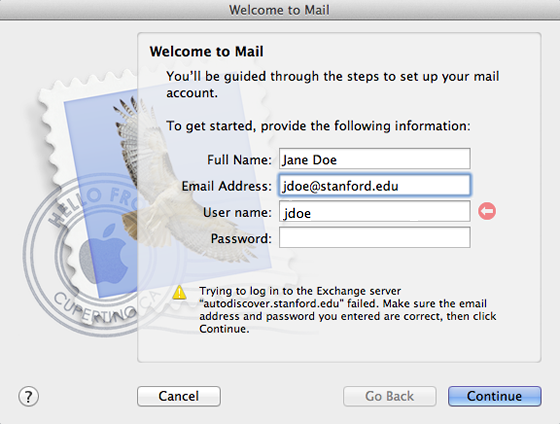
- Enter the following information for the Incoming Mail Server:
- Account Type: IMAP
- Description: Stanford
- Incoming Mail Server: imap.gmail.com
- User Name: your SUNetID@stanford.edu
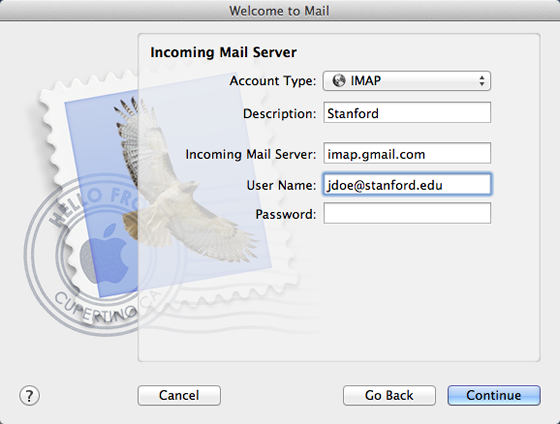
- Enter the following information for Incoming Mail Security. (Note: You may not be presented with this window):
- Use Secure Socket Layer (SSL): checked
- Authentication: Password
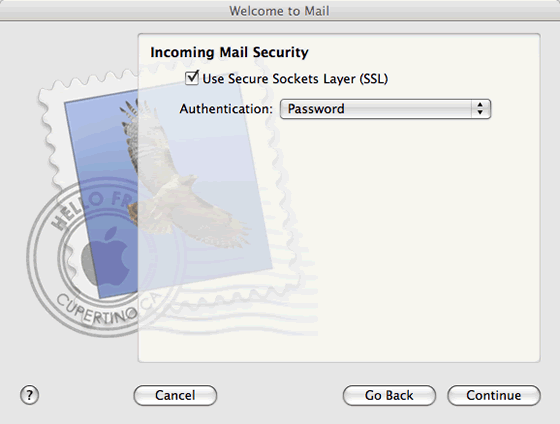
- Enter the following information for the Outgoing Mail Server:
- Description: smtp.stanford.edu
- Outgoing Mail Server: smtp.stanford.edu
- Use only this server: checked
- Use Authentication: checked
- User Name: your SUNet ID
- Password: leave blank
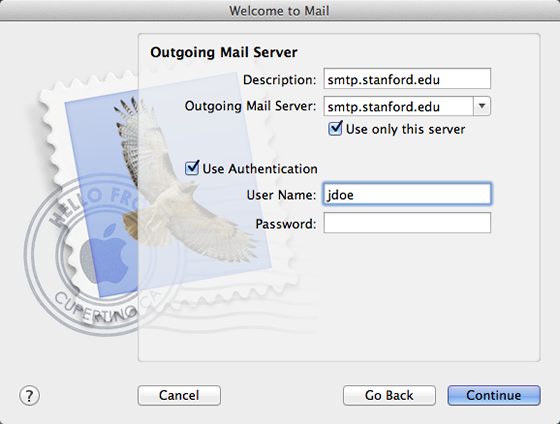
- Enter the following information for Outgoing Mail Security. (Note: You may not be presented with this window):
- Use Secure Sockets Layer (SSL): checked
- Authentication: Password
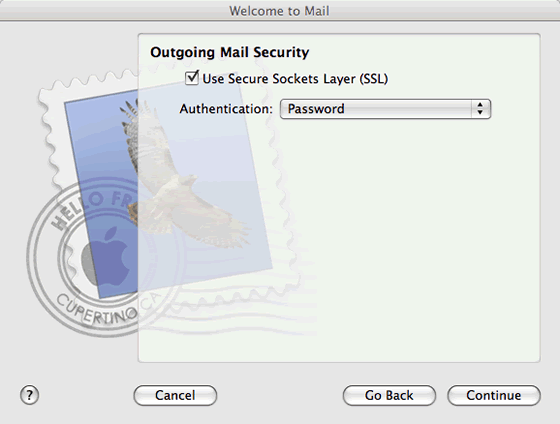
- In the Account Summary window, check Take account online and then click Create.
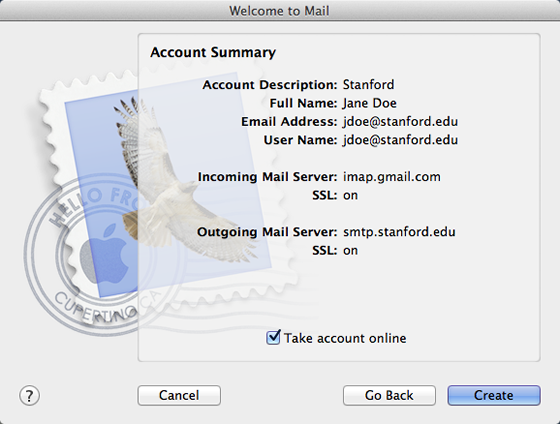
- When prompted, enter your Google account password and then click OK.
Note: Do not enter your SUNet ID password.
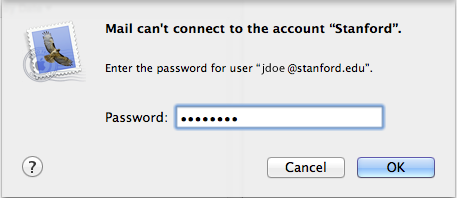
Adjusting the configuration
Next, you need to go to the preferences to verify and correct as necessary the settings the wizard created.
- On the Mail menu,click Preferences and then click Accounts on the toolbar. Select your Stanford account and verify the following settings in the Account Information tab:
- Enable this account: checked
- Description: Stanford (or a description of your choosing)
- Email Address: your @stanford email address
- Full Name: the name you want displayed on your outgoing mail
- Incoming Mail Server: imap.gmail.com
- User Name: your SUNetID@stanford.edu
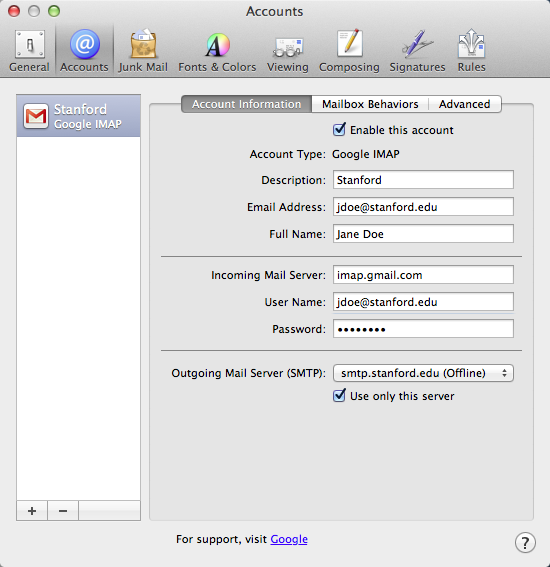
- Click the drop down menu for Outgoing Mail Server (SMTP) and click Edit SMTP Server List

- In the outgoing server list window, select the entry for smtp.stanford.edu and verify the following is entered under the Account Information tab:
- Server Name: smtp.stanford.edu
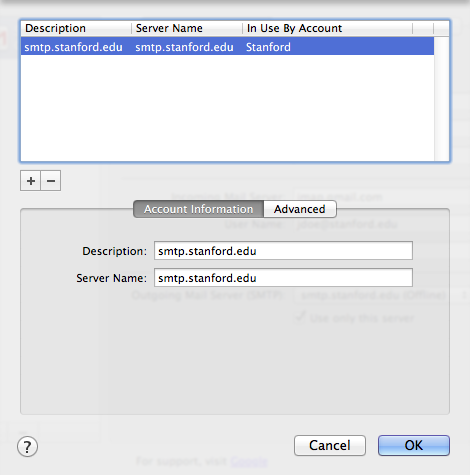
- Click the Advanced tab and verify the following settings:
- Use custom port: 465
- Use Secure Sockets Layer (SSL): checked
- Authentication: Password
- User Name: your SUNet ID
- Password: leave blank
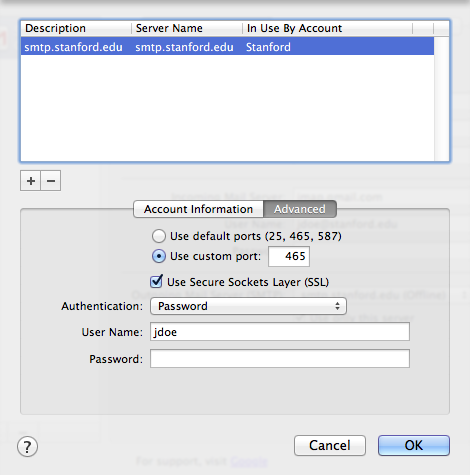
- Click OK to close the outgoing server list window
- Click the Mailbox Behaviors tab. The following settings are recommended, but are not required:
- Store draft messages on the server: checked
- Store sent messages on the server: checked
- Store junk messages on the server: unchecked
- Move deleted messages to the Trash mailbox: checked
- Store deleted messages on the server: checked
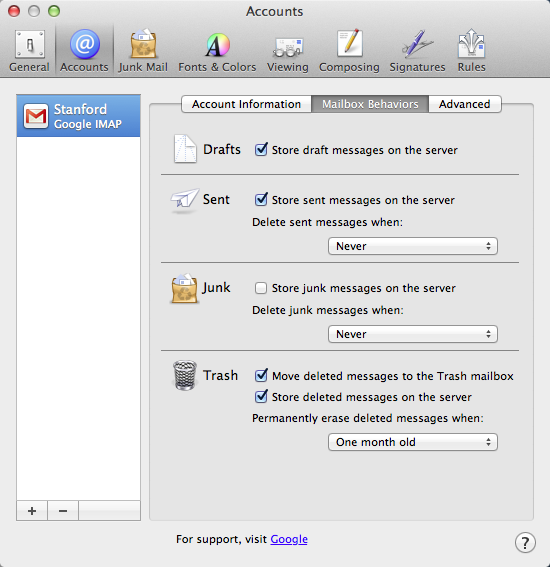
- Click the Advanced tab and verify the following settings:
- Include when automatically checking for new mail:checked
- Keep copies of messages for offline viewing: All messages and their attachments
- IMAP Path Prefix: blank
- Port: 993
- Use SSL: checked
- Authentication: Password
- Use IDLE command if the server supports it: checked
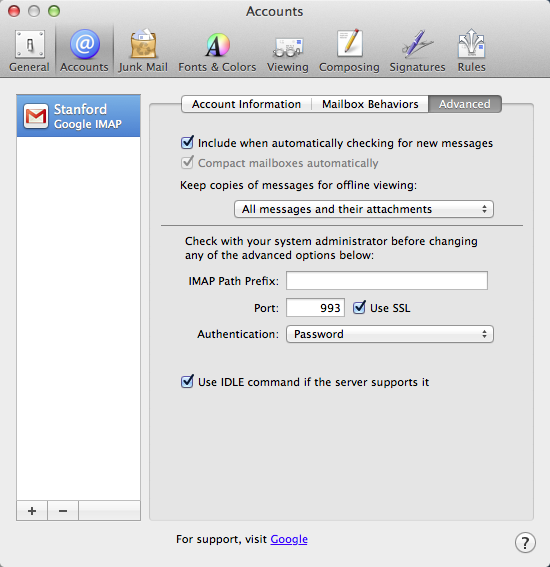
- Click Junk Mail in the toolbar
- If prompted to save your changes, click Save.

- . Uncheck the Enable junk mail filtering setting.
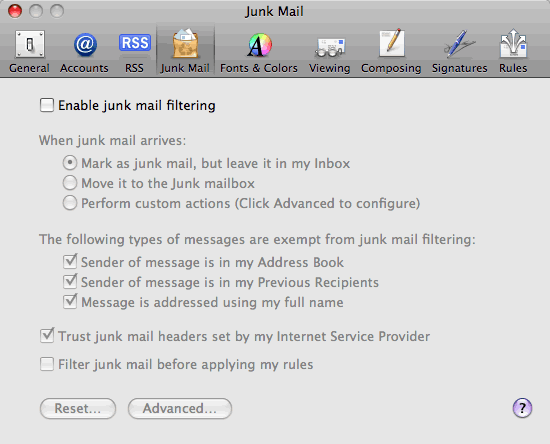
Note: Rather than use Mail's internal junk filtering tools which requires you to train it, University IT recommends relying on the anti-spam filter we run on the mail server.
- Close the Preferences window.
Setting special folders on the server
To maximize the benefits of using IMAP, you'll want to set Mail to use IMAP folders to store sent messages and trash. These instructions will walk you through this process for the Sent Mail folder. The process can then be repeated for Drafts and Trash.
- In your list of mailboxes, under your Stanford mail, expand the [Gmail] folder. Scroll down to the Sent Mail mailbox and select it.
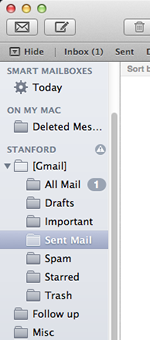 z
z
- From the Mailbox menu select Use This Mailbox For > Sent
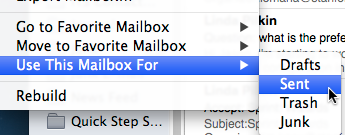
- Mail will now display your sent messages within its Sent section.
